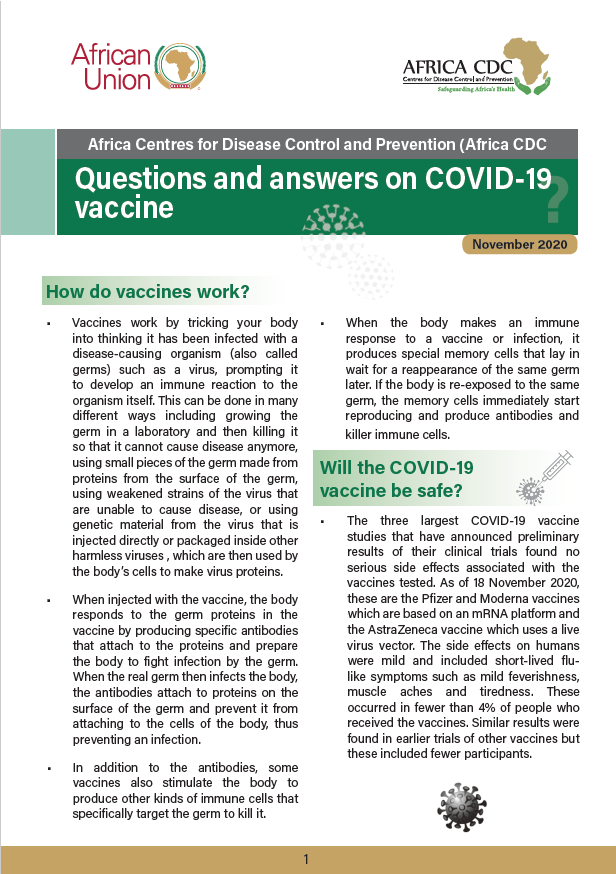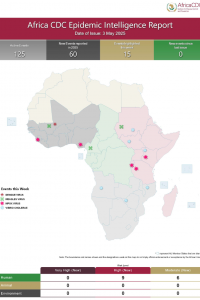
- Version
- Download 2259
- File Size 521.87 KB
- File Count 1
- Create Date 4 December 2020
- Last Updated 19 February 2021
Questions and answers on COVID-19 vaccine
How do vaccines work?
Vaccines work by tricking your body into thinking it has been infected with a disease-causing organism (also called germs) such as a virus, prompting it to develop an immune reaction to the organism itself. This can be done in many different ways including growing the germ in a laboratory and then killing it so that it cannot cause disease anymore, using small pieces of the germ made from proteins from the surface of the germ, using weakened strains of the virus that are unable to cause disease, or using genetic material from the virus that is injected directly or packaged inside other harmless viruses , which are then used by the body’s cells to make virus proteins.
When injected with the vaccine, the body responds to the germ proteins in the vaccine by producing specific antibodies that attach to the proteins and prepare the body to fight infection by the germ. When the real germ then infects the body, the antibodies attach to proteins on the surface of the germ and prevent it from attaching to the cells of the body, thus preventing an infection.
In addition to the antibodies, some vaccines also stimulate the body to produce other kinds of immune cells that specifically target the germ to kill it.
When the body makes an immune response to a vaccine or infection, it produces special memory cells that lay in wait for a reappearance of the same germ later. If the body is re-exposed to the same germ, the memory cells immediately start reproducing and produce antibodies and killer immune cells.
Attached Files
| File | Action |
|---|---|
| FAQ on COVID-19 vaccine - ENG | Download |






